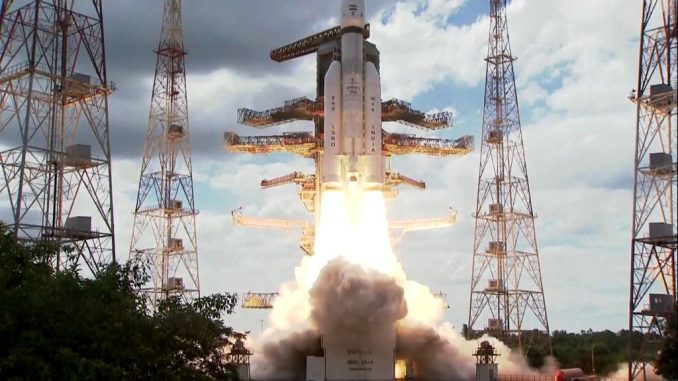
India Launches Chandrayaan-3 Rocket to Explore Moon’s South Pole
India has successfully launched the Chandrayaan-3 rocket, a mission designed to study and explore the south pole of the moon. This unmanned spacecraft aims to land on the lunar surface where no other lander has been placed before.
The rocket was launched from Sriharikota Island at around 11 am Indian Standard Time. The spacecraft will travel for over a month before reaching its destination.
Exploring the Shadowed Parts of the Moon’s South Pole
The primary goal of the Chandrayaan-3 mission is to investigate the permanently shadowed regions of the moon’s south pole. If the soft landing is successful, a rover car will be deployed to capture images and collect data. The mission aims to gather information about moonquakes, minerals, and substances on the moon’s surface, including the potential presence of ice.
It is important to note that landing on the moon poses significant challenges. India faced a setback in 2019 when a previous lunar lander crashed during a similar mission. However, the success of the Chandrayaan-1 mission in 2008, which confirmed the presence of water and ice on the moon, has given scientists optimism for the current endeavor.
India’s Ascent in Space Exploration
If the Chandrayaan-3 mission achieves its objective, India will become the fourth country to successfully land a rocket on the moon, joining the United States, China, and the former Soviet Union. The launch of this mission has generated immense excitement and national pride in India.
According to Aletta André, South Asia correspondent, “The expectations in India for this lunar mission are very high. There was loud cheering at the launch, with thousands of spectators in attendance. Prime Minister Modi speaks of the hopes and dreams of the nation launched today.”
The journey to the south pole of the moon will take approximately 42 days, with the rover expected to withstand the extreme cold and numerous craters found in the region. If all goes as planned, the lunar rover will operate for 14 days, conducting research, exploration, and communication.
India’s Advancements in Space Travel
India has been rapidly developing as a space travel nation. It has already successfully launched missions to Mars and has plans for a mission to the sun. Additionally, India aims to send astronauts into space and has recently opened up the space sector to private companies. The country’s space endeavors have been notable for their cost-effectiveness, making them accessible and financially viable.
India’s continued advancements in space exploration demonstrate its commitment to scientific research and technological innovation, positioning the nation as a prominent player in the global space community.
About Chandrayaan-3
The Chandrayaan-3 mission is an ambitious undertaking by the Indian Space Research Organisation (ISRO). The spacecraft is equipped with sophisticated instruments and technology to conduct comprehensive studies of the moon’s south pole.
The successful landing and operation of the rover on the lunar surface will provide valuable insights into the moon’s geological composition, the presence of water ice, and the potential for future human exploration of the moon.
India’s Chandrayaan-3 mission signifies a significant milestone in the country’s space exploration endeavors. As the mission unfolds, scientists and space enthusiasts eagerly await the prospect of new discoveries and knowledge about the moon’s unexplored regions.

Be the first to comment